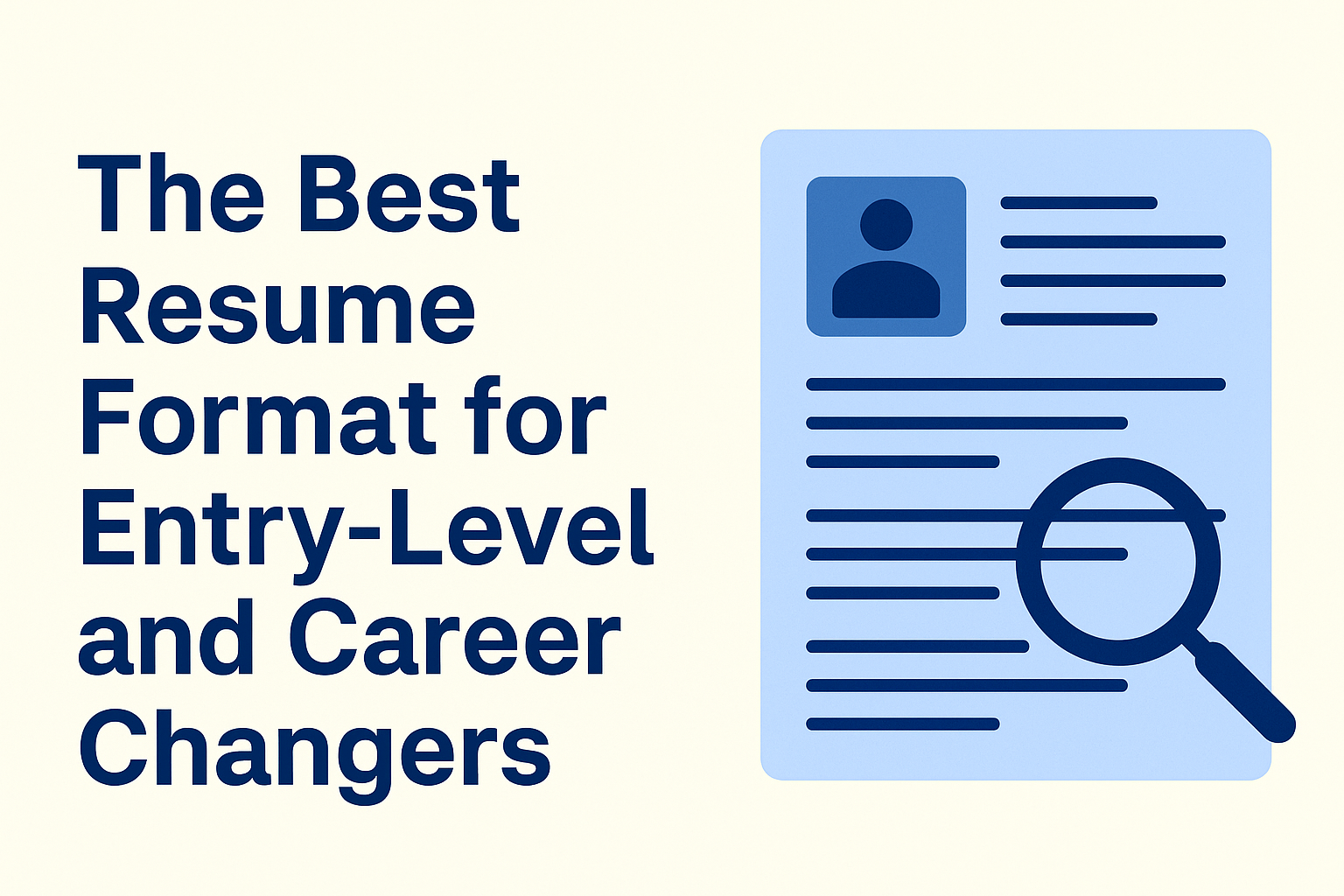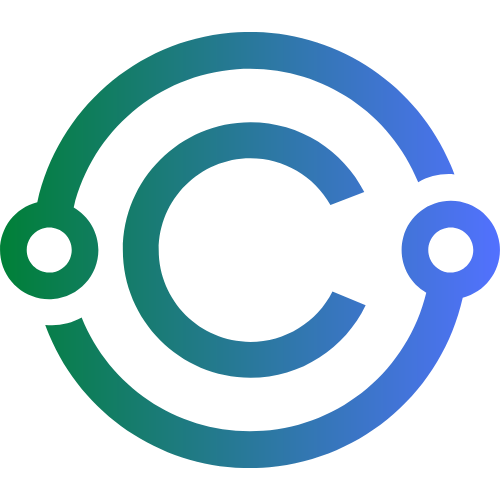The Best Resume Format for Entry-Level and Career Changers

Whether you're applying for your very first job or shifting careers entirely, your resume needs to do more than just list your education and job history—it needs to position you as the right fit for a new opportunity.
That’s why choosing the right resume format matters so much. It’s not just about style—it’s about structure, storytelling, and showing hiring managers what you bring to the table, especially when you don’t have the perfect background.
In this comprehensive guide, we’ll break down:
- The three main types of resume formats
- Which one is best for you
- How to build a job-winning resume even without direct experience
- Real examples and a case study
- Tools and templates to get started
Let’s dive in.
1. Why Resume Format Matters More Than You Think
Hiring managers spend 6–8 seconds scanning each resume. That means your format needs to:
- Showcase relevant skills and achievements fast
- Be easy to scan and read
- Work well with Applicant Tracking Systems (ATS)
Choosing the wrong format (like a chronological resume for someone without consistent experience) can bury your value.
2. The Three Main Resume Formats (Explained)
A. Chronological Resume
- Most common format
- Lists jobs in reverse order (most recent first)
- Works well for people with a steady work history in one field
Best for:
- Traditional job seekers
- People staying in the same industry
Avoid if: You’re switching industries or have employment gaps
B. Functional Resume
- Focuses on skills and qualifications
- Downplays exact job titles and dates
- Groups experience under skill categories
Best for:
- Career changers
- Entry-level applicants
- People with employment gaps
C. Hybrid (Combination) Resume
- Combines both formats
- Starts with skills/summary, followed by chronological work history
Best for:
- Anyone who wants to highlight transferable skills and work history
- Career changers with some relevant experience
3. What’s the Best Resume Format for Entry-Level Job Seekers?
The Hybrid Resume wins.
Why?
- You can lead with your skills and education
- You still get to show internships, part-time jobs, or volunteer work
- It looks modern and is ATS-friendly
Structure:
- Contact Info
- Resume Summary or Objective
- Skills Section
- Education
- Relevant Experience (even if informal)
- Projects, Volunteer Work, or Certifications
Helpful Tools:
4. What’s the Best Resume Format for Career Changers?
The Hybrid Resume wins again.
Why?
- You can highlight transferable skills from unrelated jobs
- You downplay industry-specific jargon from your old field
- You can spotlight freelance or project work in your new area
Example Structure:
- Contact Info
- Career Change Objective Statement
- Transferable Skills with Examples
- Professional Experience (emphasizing relevance)
- Education & Certifications
- Projects or Portfolio
Tip: Use job postings from your target industry to find the right keywords.
5. Resume Example: Entry-Level Hybrid Format
Name: Fatima Ali
Email: fatima.ali@email.com | LinkedIn: linkedin.com/in/fatimaali
Objective:
Recent business graduate with a strong foundation in marketing principles, content creation, and campaign analytics. Eager to apply creative problem-solving and project coordination skills in a fast-paced marketing assistant role.
Skills:
- Social Media Marketing (Instagram, TikTok, LinkedIn)
- Canva and Adobe Spark
- Content Writing and Editing
- Google Analytics
- Event Planning
Education: BBA in Marketing, University of Leeds, 2023
- GPA: 3.8 | Dean’s List | Marketing Club Vice President
Projects:
Led a student campaign that increased event attendance by 300%.
Created a blog that gained 1,500+ readers in 6 months.
Experience: Freelance Content Writer | Remote | Jan–May 2023
Wrote blog content and product descriptions for 3 small business clients.
Barista | Starbucks | Sep 2021–Dec 2022
Managed customer service and point-of-sale under high-pressure environments.
6. Resume Example: Career Changer Hybrid Format
Name: Thomas Raymond
Email: thomas.raymond@email.com | Website: thomasdesigns.com
Summary:
Creative problem-solver transitioning from teaching to UX design. Certified in human-centered design with strong experience in project planning, user communication, and curriculum building. Passionate about creating intuitive digital experiences.
Core Skills:
- UX Research & Wireframing
- Adobe XD, Figma, Sketch
- Agile Project Management
- User Interviews
- Instructional Design
Experience: High School Teacher | New York Public Schools | 2017–2022
Designed learning modules adopted school-wide. Led tech integration workshops for staff.
Built a classroom feedback system that improved student engagement by 30%.
Education & Certifications:
- UX Design Certificate, Google UX (Coursera), 2023
- BA in English, University of Michigan, 2016
Projects:
- Designed a fitness app prototype featured in UXBeginner Showcase
- Conducted usability testing for a nonprofit’s site redesign
7. Tips to Make Any Resume Format Work Better
✅ Use active, specific language:
“Coordinated,” “Led,” “Improved,” “Analyzed”
✅ Tailor your resume for each role:
Use keywords from the job description.
✅ Include numbers and results:
“Increased engagement by 40%,” “Cut costs by $10K,” “Managed 3 projects”
✅ Don’t fake experience—reframe it:
Customer service at a restaurant? That’s communication, problem-solving, and time management.
✅ Keep it simple and ATS-friendly:
Avoid fancy columns, charts, or templates with images.
8. Case Study: Ayesha’s Career Change from Retail to HR
Background: Ayesha, 29, had worked in retail sales for 8 years. She wanted to move into Human Resources but had no formal HR experience.
Challenges:
- No HR degree or certifications
- All her experience was customer-facing
Steps She Took:
- Completed an online HR Generalist course via Coursera
- Volunteered to help with hiring at her retail job
- Used a hybrid resume format to highlight:
- Transferable skills (communication, team leadership, conflict resolution)
- A “Projects” section for her volunteer HR work
- Education + Certification
New Resume Summary:
Customer-focused team lead with 8 years of experience in high-volume retail. Recently certified in HR fundamentals and supported in-store recruiting and onboarding. Eager to support people-first workplace cultures.
Result: She landed a junior HR coordinator role at a logistics company.
Takeaway: If you format your resume to spotlight your future potential instead of your past labels, people will take notice.
9. Tools & Templates to Get Started
- Novoresume Hybrid Templates
- Jobscan Resume Format Analyzer
- Resume Worded Free Score Tool
- Teal Resume Builder
- Enhancv
10. Final Thoughts: It’s About the Story You Tell
Resume formats don’t get you hired. Clarity and relevance do.
Choose a format that lets you:
- Highlight your strengths
- Reframe your experience
- Show your future value
Whether you're starting out or starting over, the hybrid format gives you the flexibility to stand out.
You’ve got the skills. Now let’s make sure the format works for you—not against you.
More from UJ+:
- How to Write a Resume That Gets Noticed in 6 Seconds
- Cover Letter Hacks: What to Say (and What to Skip)
- How to Explain Employment Gaps Without Losing Credibility
Subscribe to UJ+ for job-winning templates, real-world case studies, and weekly career strategies.

